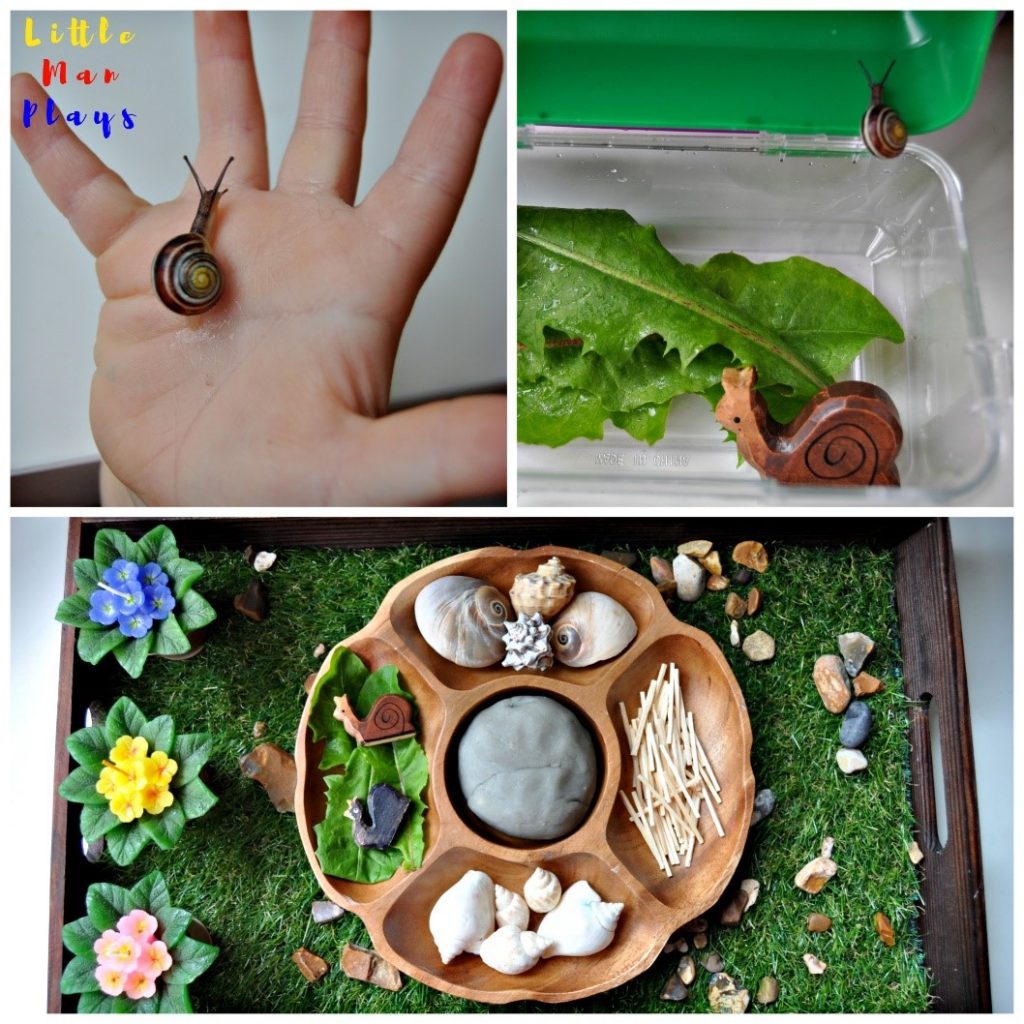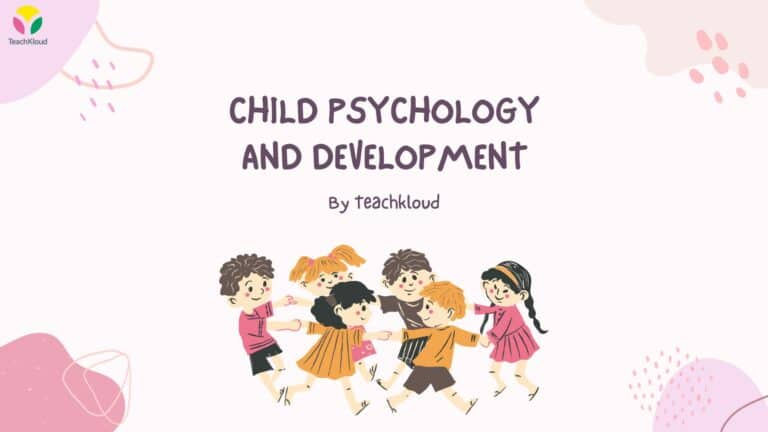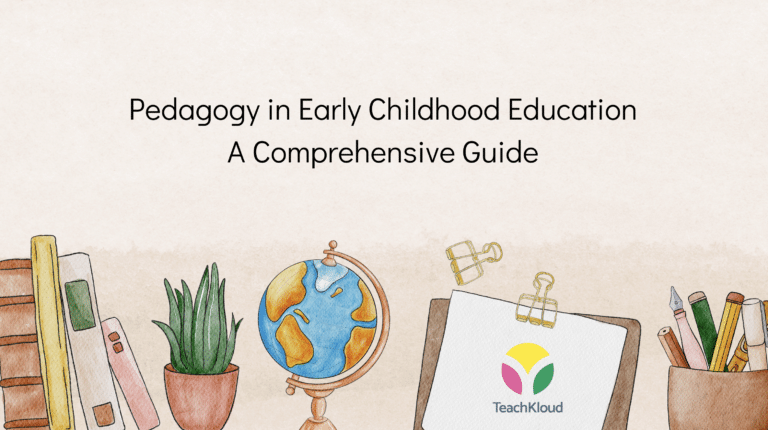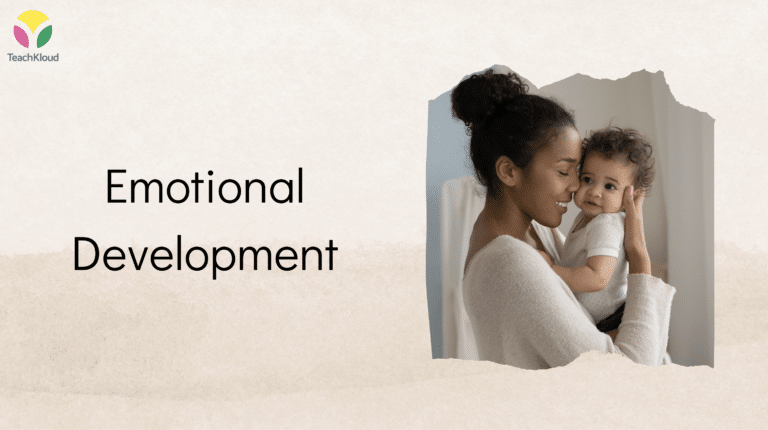Little Man Plays
Author: Little Mans Mama
Instagram: @little.man.plays
I feel no shame in admitting that I am totally squeamish about slugs and snails and have always had a massive phobia of ants. I remember when there was an “ant attack” in the staff room at work and it was me that discovered it. I put my hand in my pigeon hole to get all my post out and there they were, this massive trail of ants crawling along right where I had put my hand, overjoyed that someone had left some sticky treats in their pigeon hole for them. I couldn’t go in the staff room for two weeks after that…
Fast forward a few years and now I am mama to a little boy who is into insects BIG time (and yes, ants are one of his favourites). No more avoiding creepy crawlies for me! Plenty of time must be allowed for every journey we take so that Little Man can lay on the ground watching the ants march across the pavement in front of him or wait for a sleeping snail to wake up in his warm hand so he can watch its tentacles unfurl. Such simple experiences, but what powerful learning can come from them. We, of course, have a little chat about what is happening at the time, e.g. “can you see the ants marching in a line? They’re walking back to their nest,” but, we then carry on our journey to the shops etc and it would be quite easy for me to forget what we have just seen, especially, as it just so part and parcel of everyday life for me.
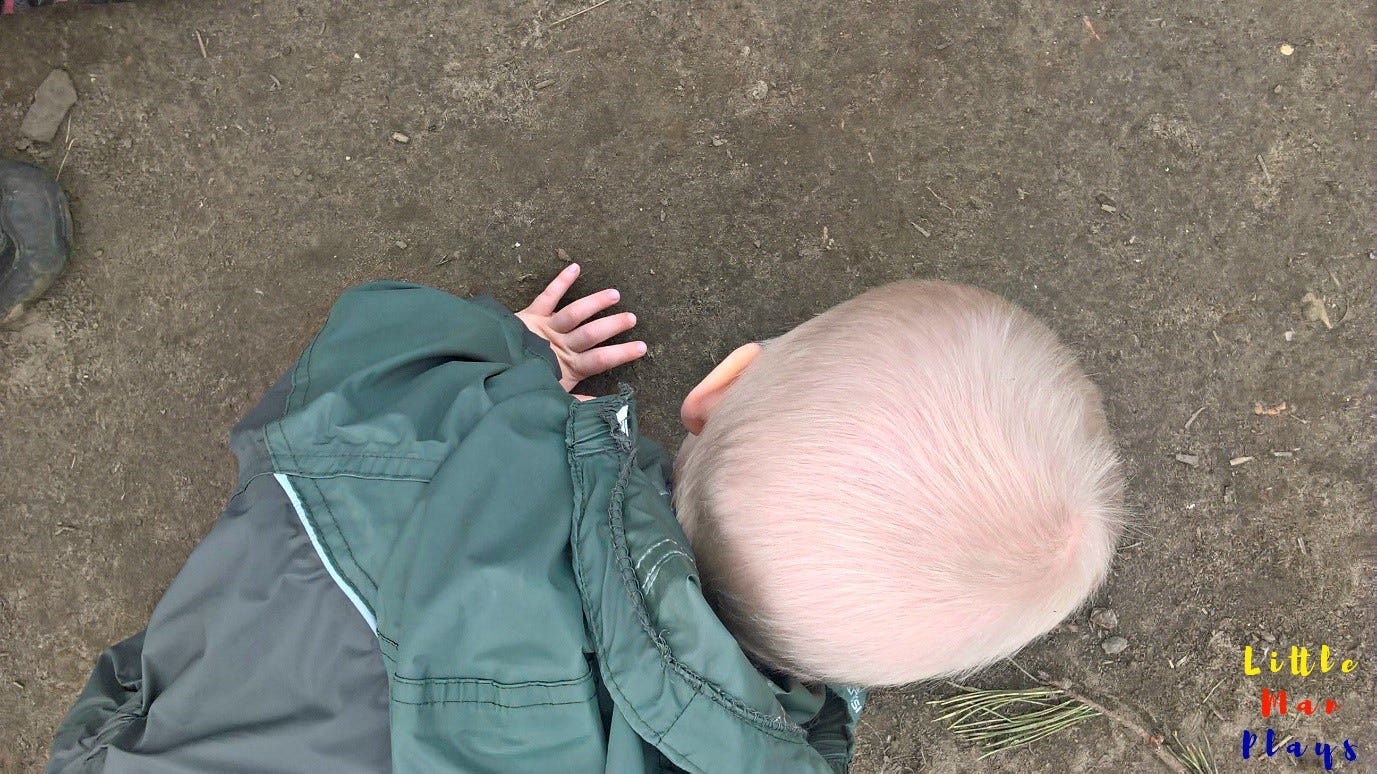
However, these experiences are magical and wonderful to a little boy who has never seen them before, a little boy who is learning about the world around him. I decided to start doing simple activities at home to reinforce what we had seen when we were out and about. This way we could spend a lot more time talking about and focussing on what was so enthralling and amazing for Little Man. I decided to use sensory play as a means of doing this because it meant I could make the activities look and smell pretty, but more importantly, it would help Little Man’s learning whilst he was learning, if that makes sense. Anne O’Connor from ‘Community Playthings’ comments that, “Early years theorists have always told us — and neuroscience now confirms — that sensory stimulation builds the nerve networks that create the architecture of the brain.”
So how do I go about doing this?
Well, one rainy day we went on a snail hunt in the garden. Once we’d found and watched a snail, we made playdough snails and talked about the snail’s foot and tentacles.
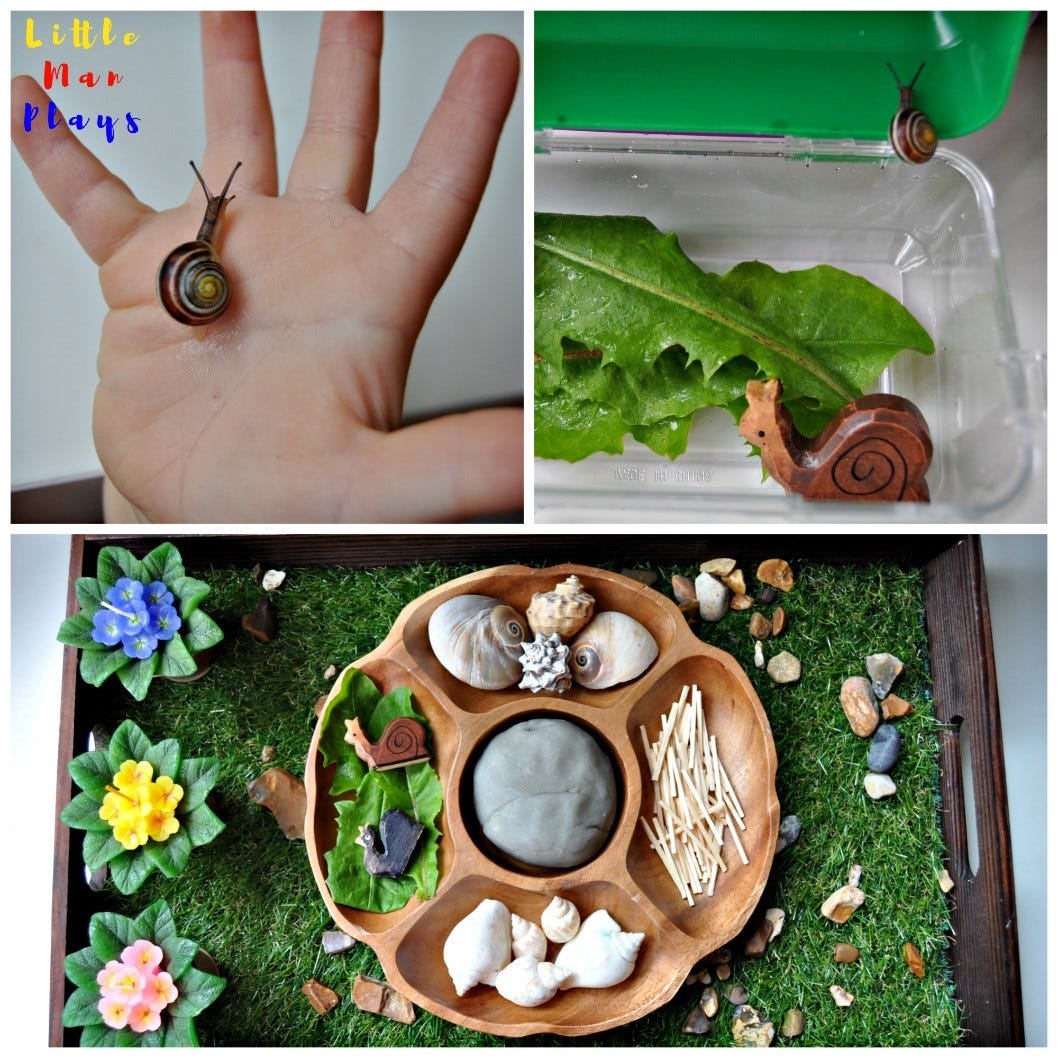
Little Man was fascinated by a double rainbow in the sky and very sad once it had gone. We read a story about a rainbow and talked about when they appear and then we played in a rainbow sensory bin to reinforce the colours of the rainbow.

After watching diggers for ages on one of our walks we came home and played with crunchy cloud dough and read digger books to learn the names and parts and what each “digger” does.
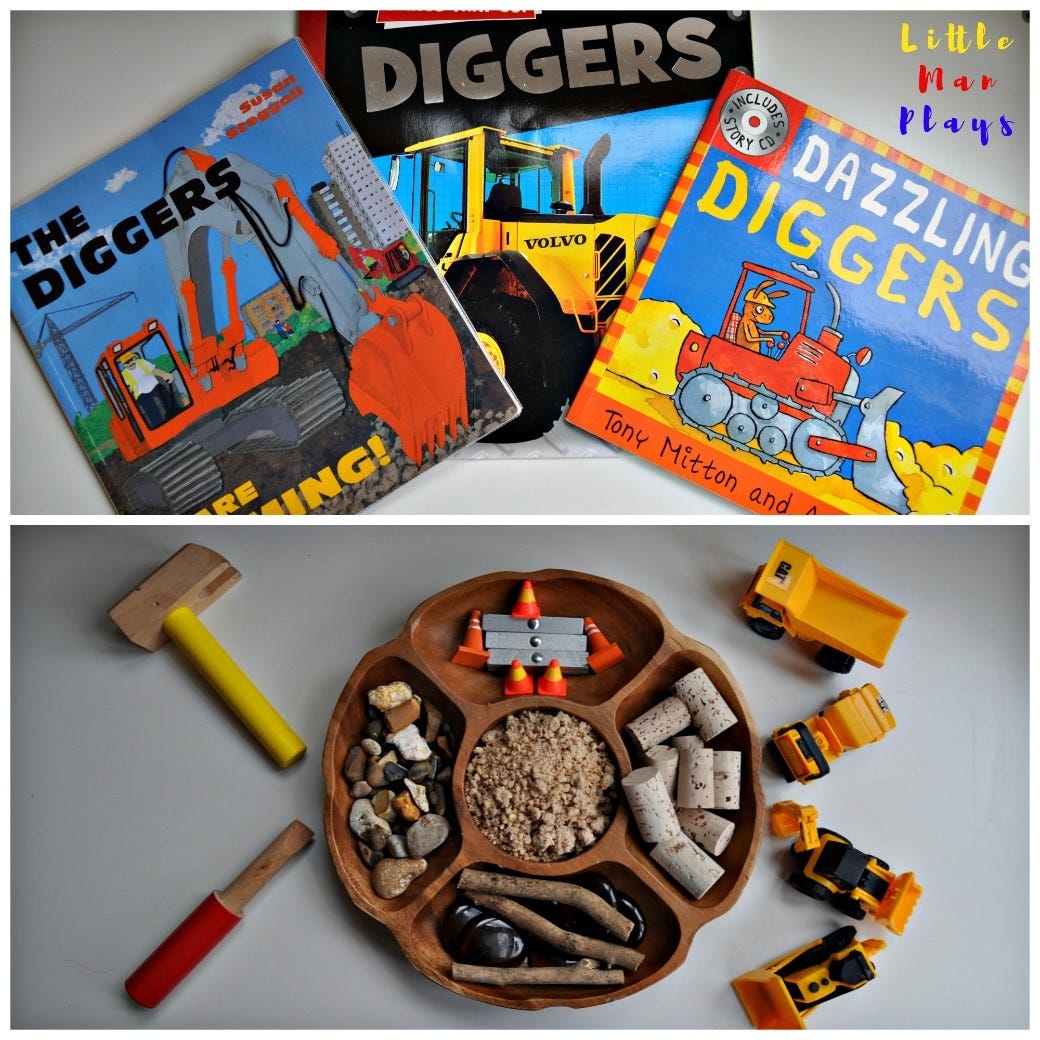
Here are some of our other sensory play activities that came from everyday experiences with Little Man:

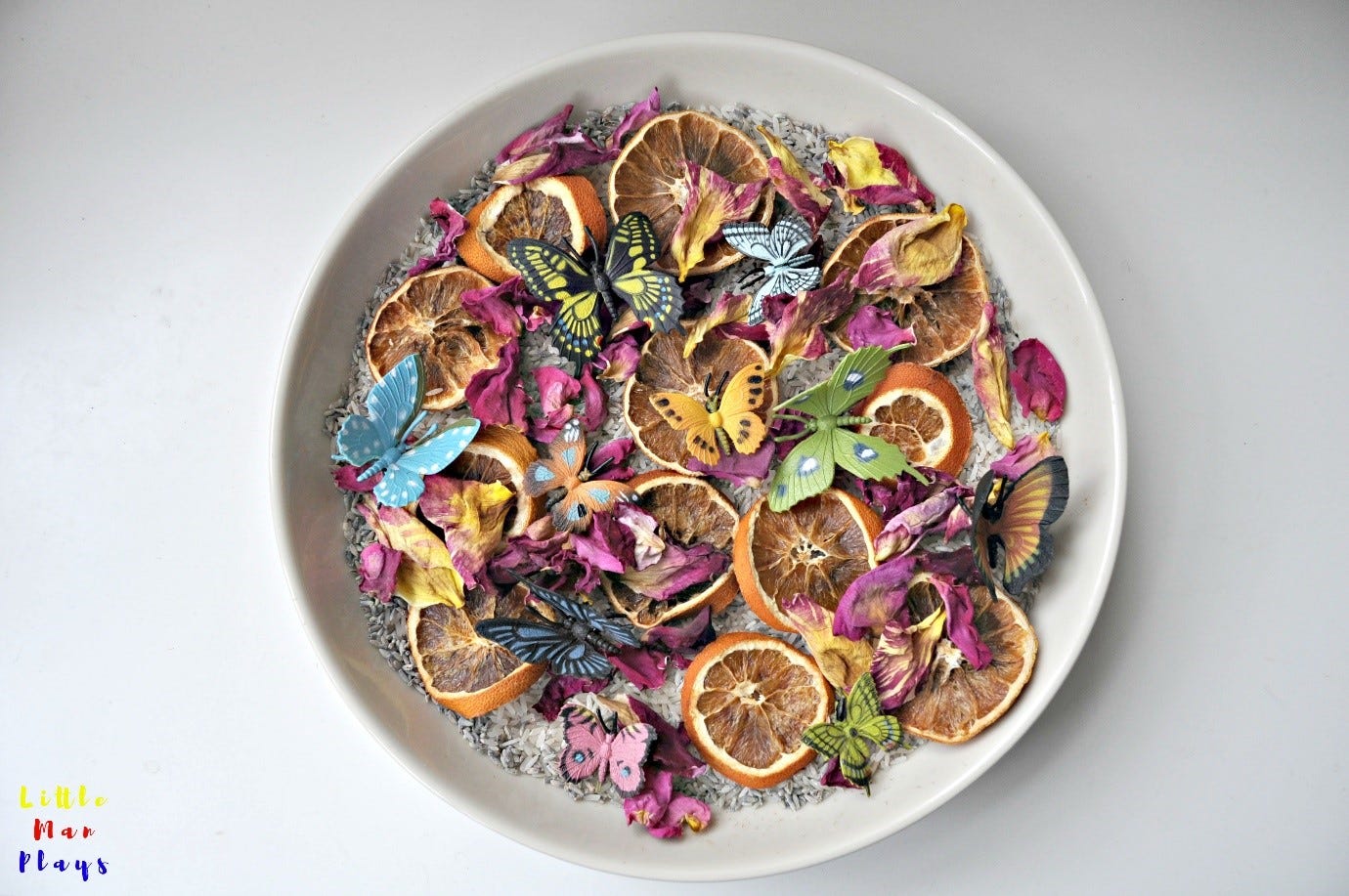
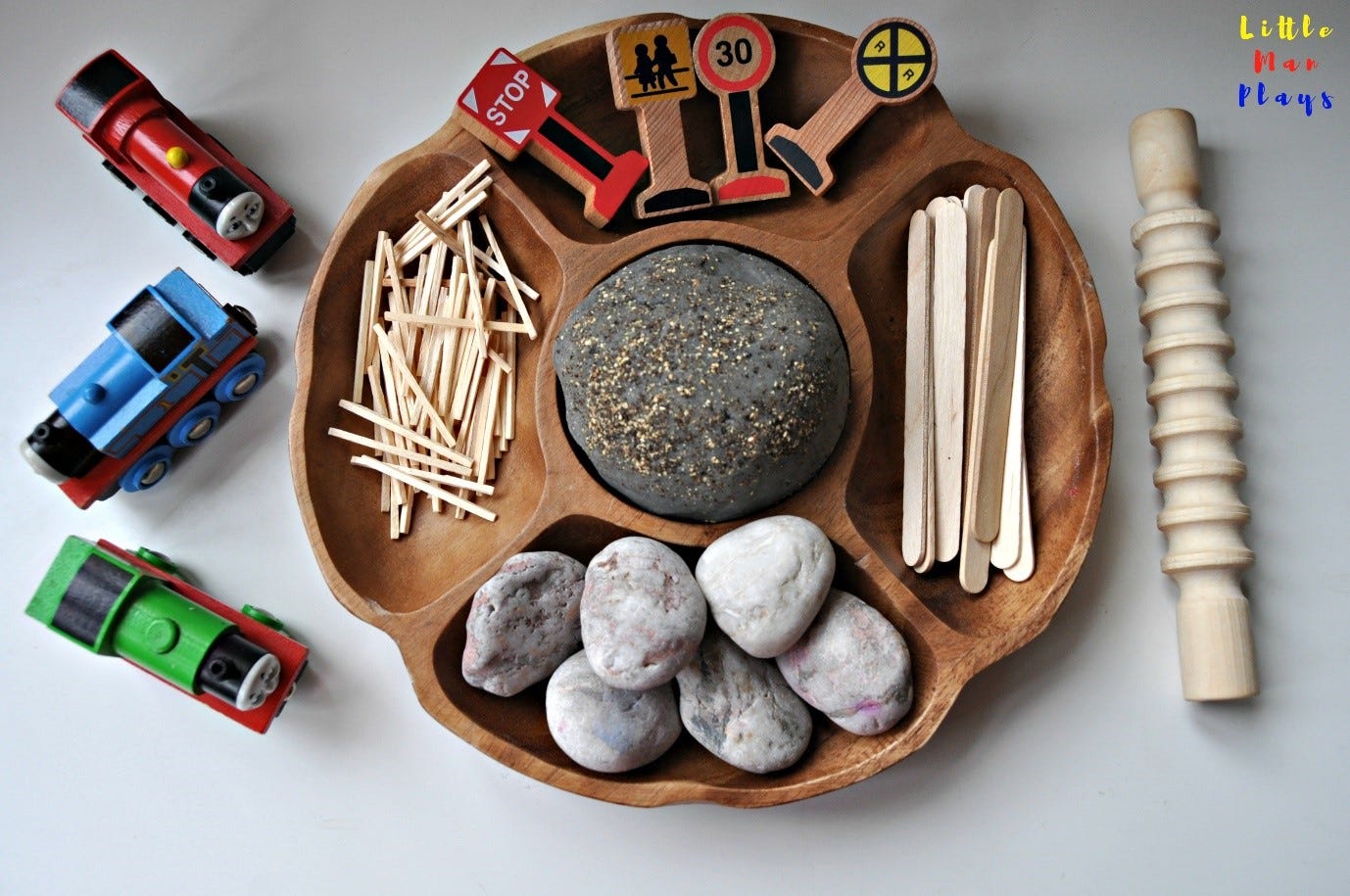
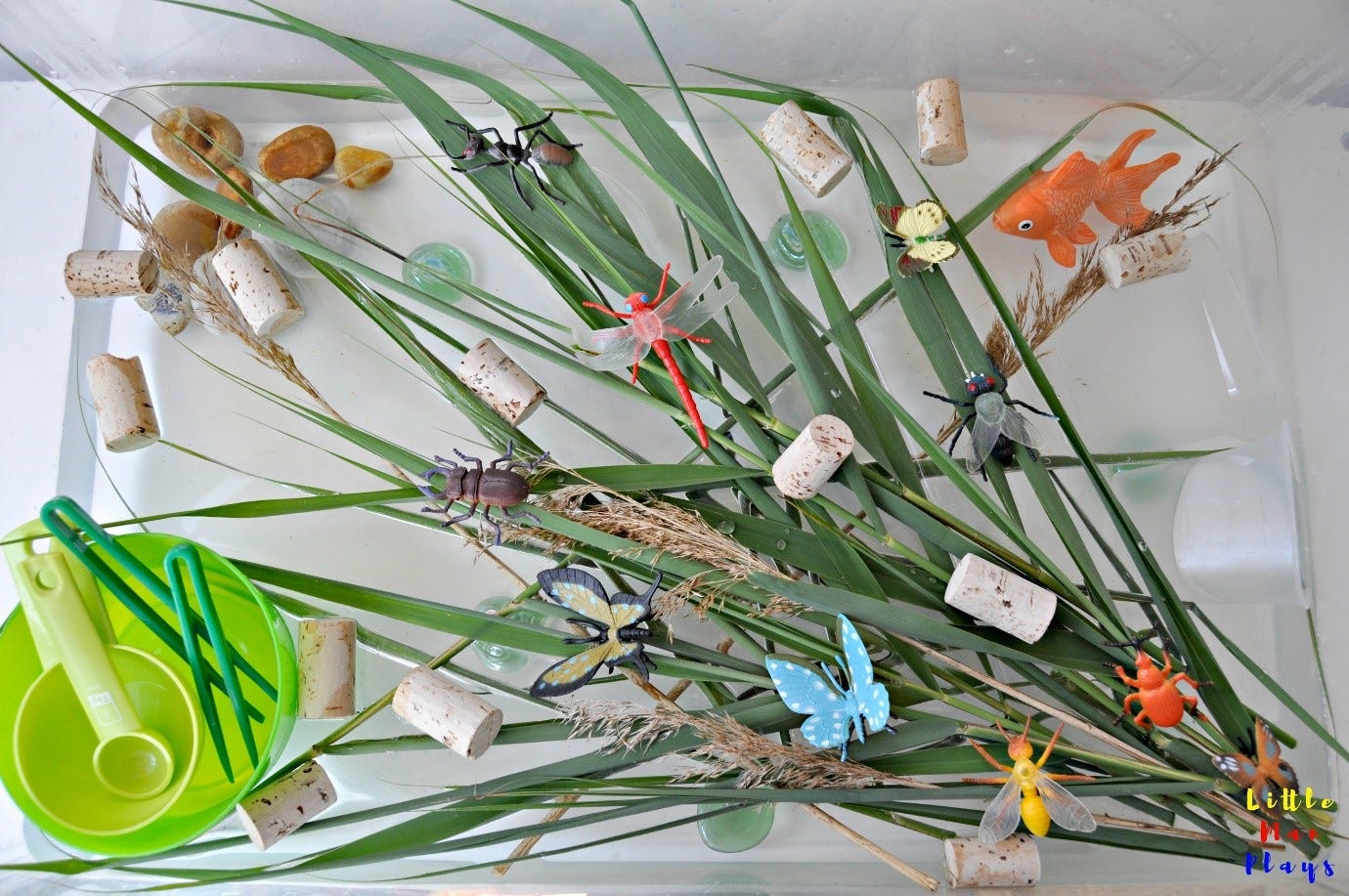
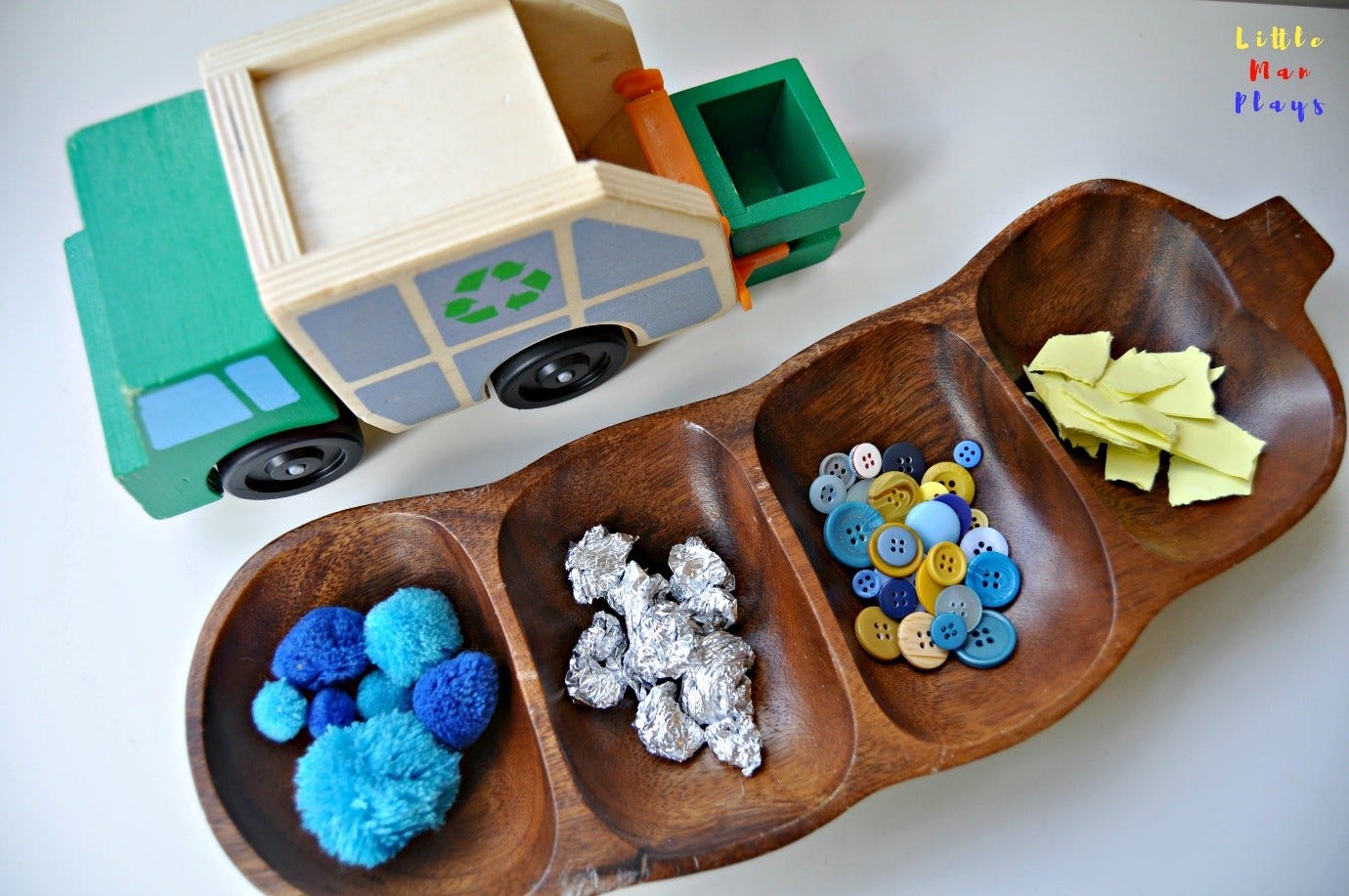
Top Tips:
· Rice is our favourite sensory bin filler. It is cheap and can be dyed any colour and keeps for like ever! It feels so good and makes such a wonderful noise! (Can you tell that I get as much fun out of sensory play as Little Man does?!!!)
· Make your own play dough. This is the recipe we use:
2 cups plain flour
2 tbsp vegetable oil
½ cup salt
2 tbsp cream of tartar
1 ½–2 cups of water
· DON’T spend a lot of money. I don’t have a “magic money tree” so most of the resources are things I already have a home, are from nature or cost a couple of pounds on eBay! Charity shops are wonderful too!
· An under bed storage box is perfect for sensory bins. They are the perfect size for your child to sit in whilst they play!
· Make use of your local library! Did you know that children can get out 20 books at a time? That’s amazing! We go to the library regularly. Books are wonderful for reinforcing real life experiences. We use fiction and non-fiction books with our activities.
· I add lots of household ‘tools’ to our sensory play to help Little Man learn how to use them. Our favourites are the little iron jugs, measuring spoons and salad tongs.
· Finally, don’t worry if after you set up an activity your child does something totally different to what you had in mind. Think of them as being creative and using their imagination!
Give it a go! I promise you will have so much fun whilst helping your child learn!
“Children learn as they play. Most importantly, in play children learn how to learn.” — O. Fred Donaldson
Follow us on Instagram:@little.man.plays
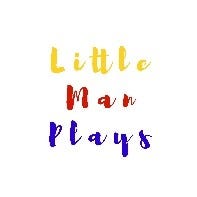
Thanks to Claire Underwood for help with this post.
